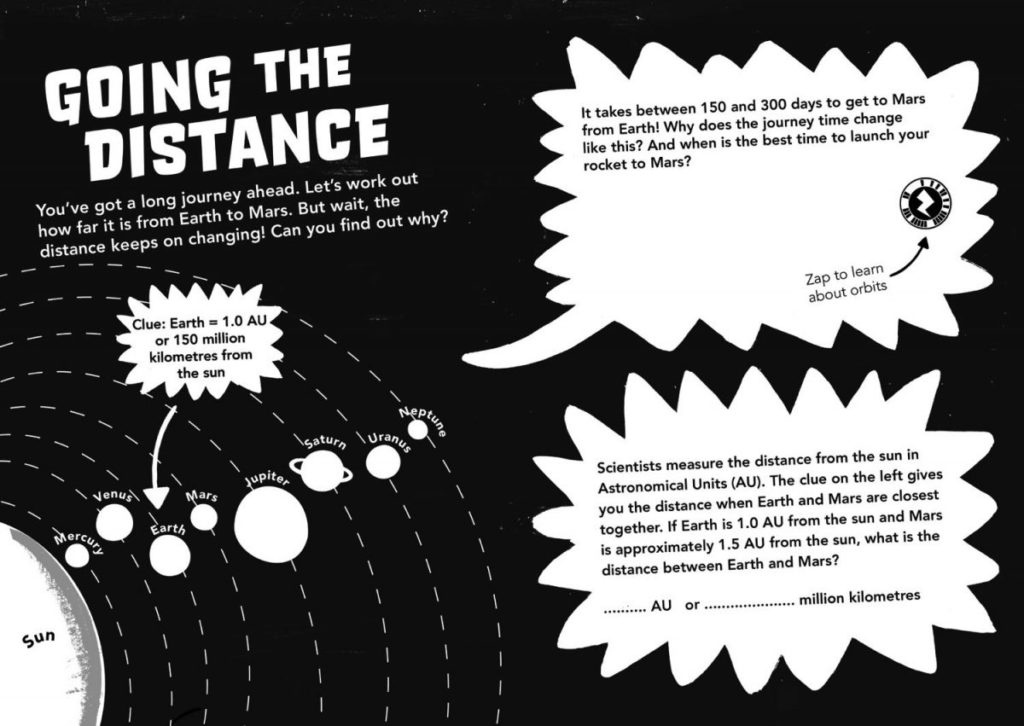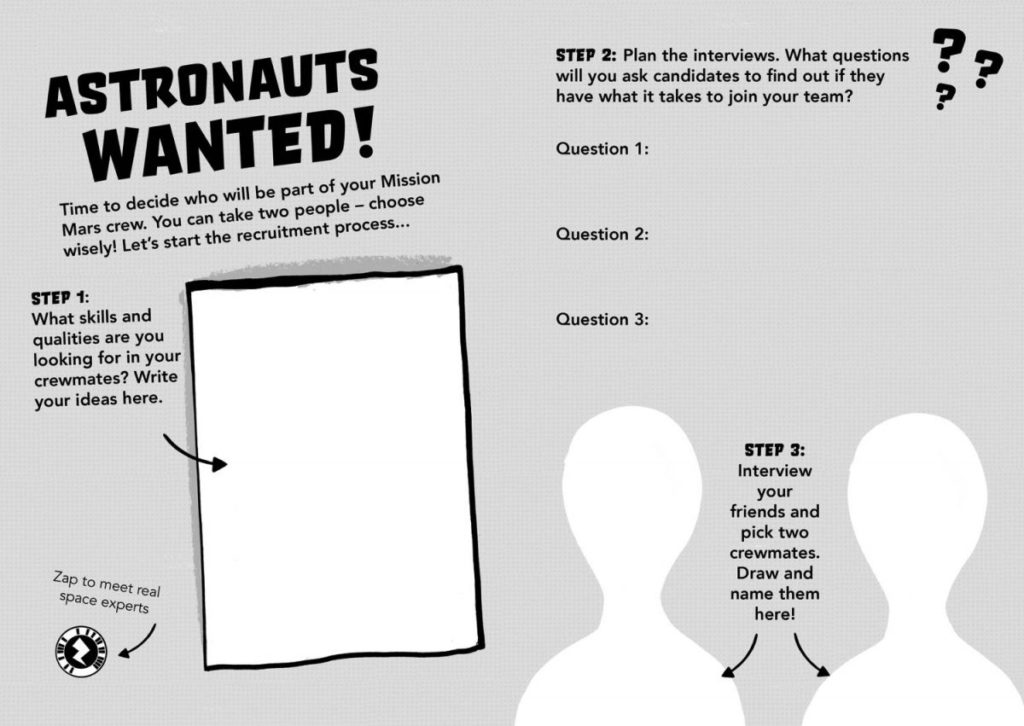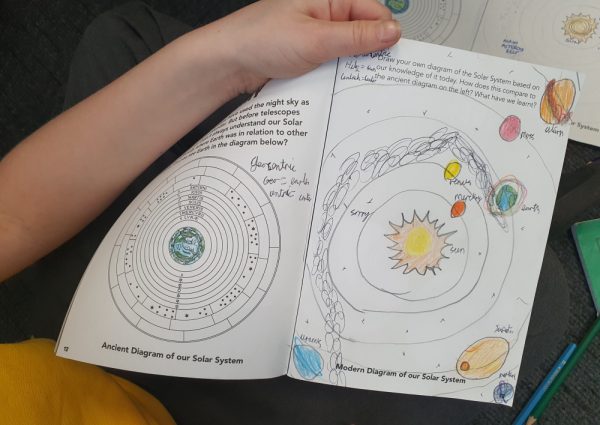You can even use some of these expansion activities as a way to set Mars Diary homework and encourage parent participation.
Here we look at each activity in Chapter Two: Plan Your Mission.
Activity 2.1: Going the Distance
This exercise helps students to comprehend the scale of the solar system and the huge distances involved in travel in space. It gives students a chance to take an overview of the solar system as a whole while also learning about how orbits affect the distances between individual planets. It also introduces students to Astronomical Units (AU).
Expanding this activity as a written exercise:
Research the similarities between Earth and Mars e.g. number of moons, names of moons, furthest distances apart from each other in AUs and millions of km. Present the research in various ways – posters, written report, write and plan a class presentation.
Lower KS2: Ask students to make a word bank and write the meanings to deepen their understanding.
Upper KS2: Write an explanation/answer to the question ‘Why does the distance between planets keep on changing?’
Useful Links:
- ESA information about our solar system
- An overview of the planets in our solar system
- Animated clip showing NASA’s MAVEN launch in 2014 and explaining how to overcome the orbital differenced between Earth and Mars, to get a spacecraft into orbit around Mars
- National Geographic clip about our Solar System (video)
Activity 2.2: Astronauts Wanted
This careers activity invites students to think about the skills, knowledge and experience people might need to go to Mars. Use this activity as a PSHE resource by encouraging students to think about their relationships with others, how to manage risk and make good decisions, and the benefits of having a range of personalities within a collaborative team.
Expanding this activity as a written exercise:
Interviews: After a class discussion, children can write a number of questions one would ask an astronaut in an interview. Help children to consider open-ended questions focussing on the skills required to be an astronaut. Once the questions have been prepared, children can partner up and write answers to someone else’s questions.
Download the PowerPoint presentation or the Image Bundle from the Activity Page. Students can choose a STEM expert to research and prepare a report on all about their job and skills.
Upper KS2: Ask students to write their own CV in preparation for an interview.
Useful Links:
Activity 2.3: Excess Baggage
The first humans to travel to Mars will need to take sustainable food and water supplies, scientific equipment, tools to maintain their spacecraft and other machinery, communications systems, safety equipment, medical supplies and entertainment to support mental health.
Expanding this activity as a written exercise:
Write a list: Start by talking about what we take on our holidays and offer different umbrella headings – Necessities, Entertainment, Keepsakes, Toiletries, Luxury Items etc. Then consider what the life-sustaining essentials would be for the first people on Mars. Would anyone change what was on their list?
Justifications: Children could write a justification of why they have picked certain items.
Useful Links:
Activity 2.4: Design Your Own Rocket
In this creative, hands-on activity students will design their own Mars rocket, researching different types of spacecraft, different shapes and designs and their suitability for the tasks outlined so far. They will also consolidate this research with what they have learned and created in the first two chapters of the Mars Diary.
Children could do this activity in groups or individually. Use this activity as an opportunity to head to your school library and allow access to books about space and rockets as well as internet access. Lower ability children will need support to access the range of resources and could be guided through this process. Provide lower KS2 children with a list of recommended websites. Upper KS2 will begin to be more independent in finding useful information online. Ask students to research different shapes of rockets and note what the similarities/differences are. As children start planning their own design, have them make notes and explaining their design decisions.
Allow the children to choose how they wish to present their rocket design – it could be drawn on paper, created using recyclable modelling materials, on the computer etc.
Make a class wall dedicated to the activity, showing their presentations. Children could add words and questions to the wall and be encouraged to write answers or explanations to the ones they know.
Useful Links:
- Download the PowerPoint presentation or Image Bundle from the Activity Page
- Tim Peake looks at his Soyuz capsule while it is on display at the Science and Media Museum in London
- Charts of rockets from around the world
///
Each activity in the Mars Diary comes with detailed Teaching Notes that provide a wealth of information and ideas on how you can adjust each activity for your classes learning level and how you can expand on each one for maximum cross-curricular learning. Download the Teaching Notes for each activity on the activity’s webpage.
Remember, Mars Diary activities are aimed at children aged 7-11, but can be easily adapted for most primary levels. If you ever have any questions or aren’t sure where to find any of our resources or support materials, just email us! We’re here to help.







